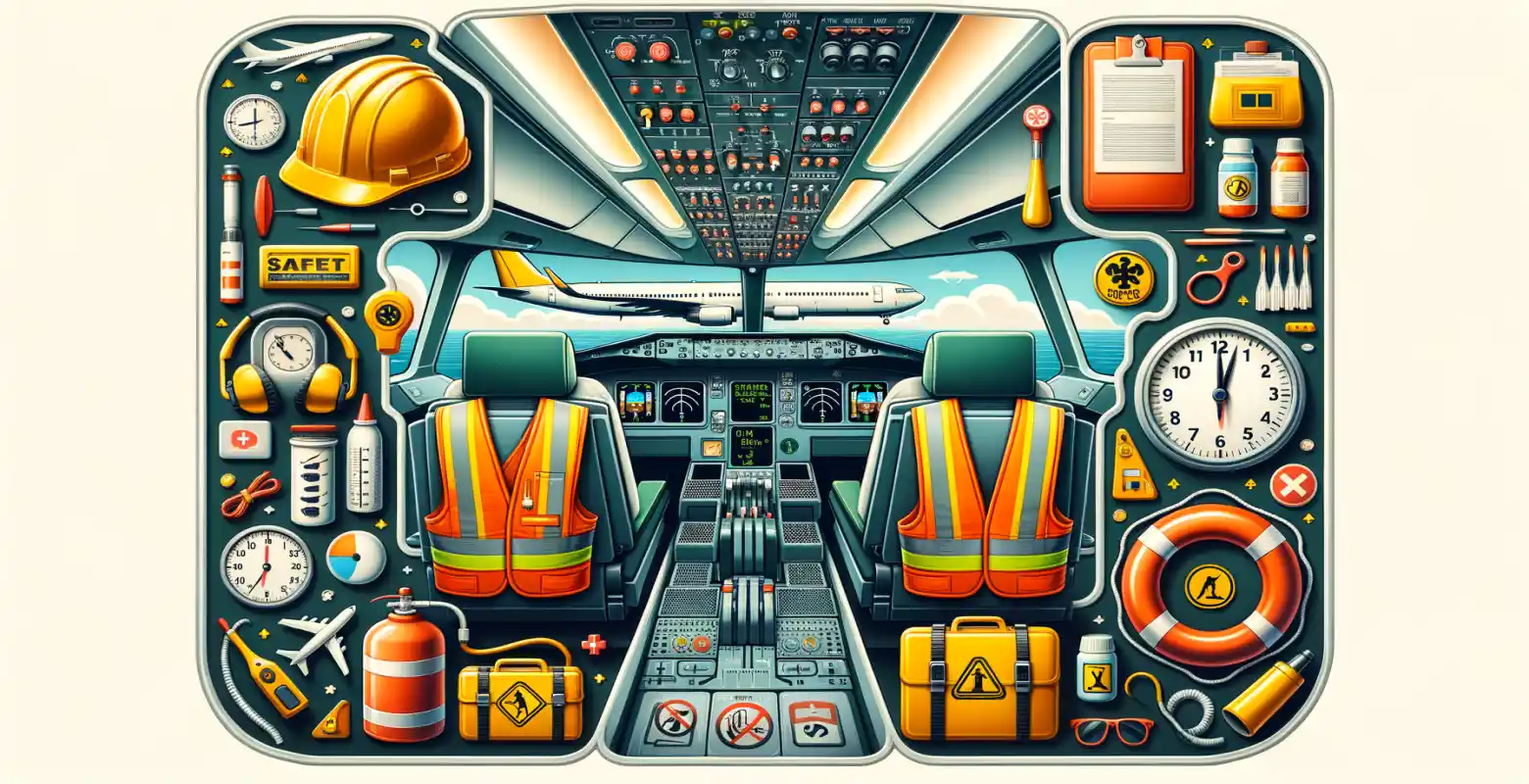What are the most important safety procedures on board an airplane?
Introduction
Safety on board an aircraft is a priority for airlines, crew, and passengers. Every flight, regardless of its length or destination, is subject to strict safety procedures aimed at minimizing risk and protecting lives. For many passengers, especially those who rarely travel, these procedures may seem routine or unnecessary. However, each of them has been developed based on decades of experience, analysis, and advanced research, making them extremely important.
In this article, we will discuss the most important safety procedures that apply on board an aircraft, why they are important, and how they are applied in practice.
Pre-flight Safety Procedure
Every flight begins with a key procedure, which is the safety briefing. Before takeoff, the cabin crew (flight attendants) instruct passengers on what to do in an emergency situation. This includes, among other things, demonstrating the use of oxygen masks, life jackets, and pointing out the location of emergency exits.
Why is this important? In emergency situations, passengers' reaction time is crucial. Studies show that quick reactions can significantly increase the chances of survival. Properly preparing passengers is therefore a fundamental element in minimizing risk.
Seat Belt – Key Element of Protection
One of the most obvious but also crucial safety elements on board is fastening seat belts. Seat belts should be fastened throughout the entire flight, even when the seat belt sign is off. Sudden turbulence can occur at any time, and fastened seat belts protect passengers from injuries.
For example, in 2019, a flight from Tokyo to Honolulu experienced unexpected turbulence, resulting in injuries to over 30 people. Most of them did not have their seat belts fastened at the time of the turbulence. This highlights how important it is to follow the crew's recommendations regarding seat belts.
Oxygen Masks
One of the most stressful moments for passengers may be a situation where cabin pressure suddenly drops, leading to the automatic release of oxygen masks. When the cabin loses pressure, access to oxygen becomes crucial.
In such a situation, passengers are required to immediately put on the oxygen mask. Instructions usually remind passengers to first put on their own mask before assisting others, especially children. This is not a coincidence – ensuring one's own access to oxygen allows for effective action and helping others.
Emergency Exits
Every aircraft is equipped with emergency exits that must be easily accessible and visible to passengers. During the safety briefing, the crew indicates where the exits are and how to use them in case of necessity. It is important for passengers to remember where the nearest exits are, as in emergency situations, quick evacuation is crucial.
It is also worth noting that emergency exits are positioned differently in various aircraft models, so paying attention to the instructions each time is extremely important.
Procedures for Emergency Water Landing
Although a water landing (ditching) is a rare scenario, airlines are prepared for such an eventuality. In the event of such an incident, passengers are instructed on how to use life jackets located under their seats. These jackets are inflated with air only after exiting the aircraft to not impede evacuation.
An example of a successful water landing is the "Miracle on the Hudson," where a US Airways flight landed on the Hudson River in New York in 2009. Thanks to the quick actions of the crew and the application of appropriate procedures, all passengers were rescued.
Instructions for Carry-On Luggage
An important aspect of safety procedures is proper stowing of carry-on luggage. Airlines require baggage to be placed in the overhead bins or under the seats in front of passengers. Luggage must not block aisles or emergency exits, as in case of an emergency, quick evacuation could be hindered.
In emergency situations, passengers are also instructed not to take their carry-on luggage during evacuation. Every second can be crucial, and the additional weight can slow down the aircraft evacuation, endangering the lives of others.
Fire Procedures
A fire on board an aircraft is one of the most dangerous events, which is why there are strict fire prevention procedures. All modern aircraft are equipped with advanced fire detection and suppression systems, and the crew is trained to operate them.
In case of a fire, passengers are required to immediately follow the crew's instructions, which may include an evacuation order. It is important to remember that the crew is equipped with special fire extinguishers and other tools to fight the fire, which can be used in case of danger.
Expert Insights
Experts in aviation safety, such as Prof. John Doe from the University of Aviation, emphasize that adherence to safety procedures by passengers and crew is key to minimizing risk. Prof. Doe points out that most aviation incidents occur during takeoff and landing, so extra caution should be taken especially during those moments.
Another expert, Dr. Jane Smith, highlights the increasing role of safety-enhancing technologies in flights, such as advanced real-time aircraft status monitoring systems. These technologies allow the crew to react more quickly to potential threats, and airlines to monitor their aircraft status continuously.
Summary
Safety procedures on board an aircraft are the result of years of experience and research. Every element, from fastening seat belts to evacuation, aims to protect passengers and minimize risk. Although they may seem routine to many, adhering to them can be a matter of life and health. Therefore, during each flight, pay attention to the crew's instructions and follow all recommendations.
Understanding and adhering to safety procedures is not only an obligation but also a conscious approach to air travel. The better prepared we are, the greater our chances of safely and comfortably reaching our destination.






Number of comments: 0